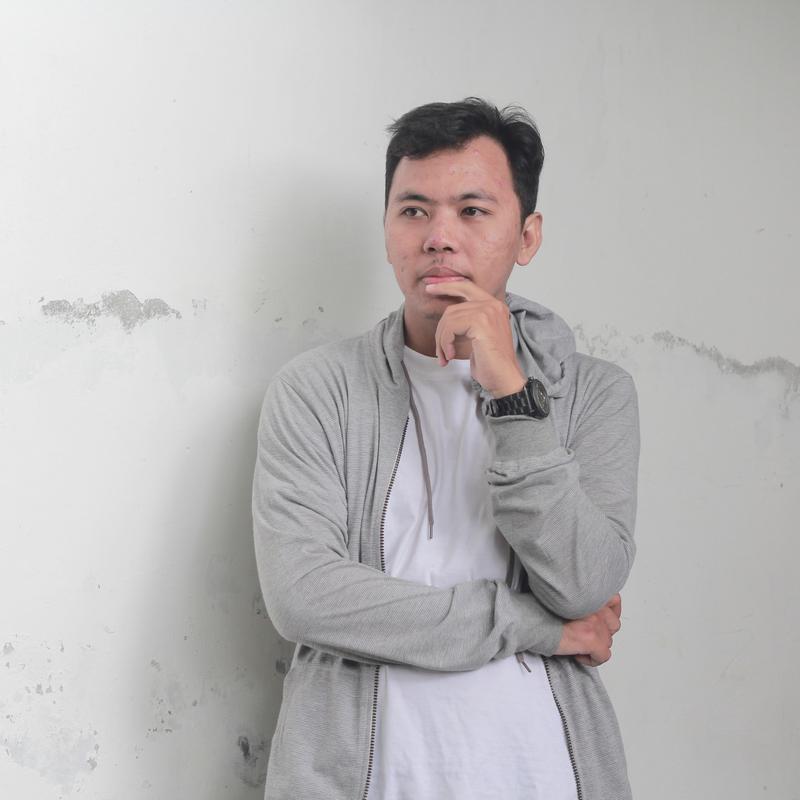 New York Fellowship grantee, Gardika Gigih PRADIPTA (ACC 2022), is a Sragen-based pianist, composer and soundscape researcher interested in the intersection of music, society, and culture. He studied music composition and earned his master’s degree in Cultural Anthropology at the Indonesian Institute of Arts Yogyakarta. Harnessing a musical style that mixes his Javanese roots with a western classical music education, Pradipta weaves together music scenes and genres from electronic to concert, folk, and film. His work has been performed in Japan, the United States, the Netherlands, Singapore, Malaysia, and Indonesia.
New York Fellowship grantee, Gardika Gigih PRADIPTA (ACC 2022), is a Sragen-based pianist, composer and soundscape researcher interested in the intersection of music, society, and culture. He studied music composition and earned his master’s degree in Cultural Anthropology at the Indonesian Institute of Arts Yogyakarta. Harnessing a musical style that mixes his Javanese roots with a western classical music education, Pradipta weaves together music scenes and genres from electronic to concert, folk, and film. His work has been performed in Japan, the United States, the Netherlands, Singapore, Malaysia, and Indonesia.
Currently, he is nearing the midway point of his six-month ACC grant period aimed at discovering the many diverse and rich musical ecosystems and cultures of New York City and the US. Reflecting on his first few months in New York, Pradipta recently spoke with ACC to describe his experience thus far.
Follow Pradipta’s music diary blog covering his adventures and discoveries during his ACC Fellowship HERE
ACC: How have your days been filled since starting your ACC Fellowship?
GGP: Almost every day I go to concerts at night. In the afternoon I usually practice piano. I also usually do some writing of my experience for my blog – those are some of my daily activities. Also, right now, twice a week, I am taking a class with Susie Ibarra (ACC 2007, 2018) about field recording and how to transform natural soundscapes to become music.
ACC: What are some things you’ve learned from this class with Susie?
GGP: I have been really enjoying this class because Susie is an amazing musician, composer, and mentor. In the class there are a bunch of other musicians – mostly percussionists or drummers, but also composers – and we share a lot of our own experiences and how to think about incorporating nature with our own approaches [to creating music]. The most important thing I’ve learned from the class so far is about how to mix inspirations. For example, I learned that Susie’s approach incorporates Filipino percussion music with her contemporary compositions, and that’s exactly what I dream about when I think of multiculturalism in New York music.
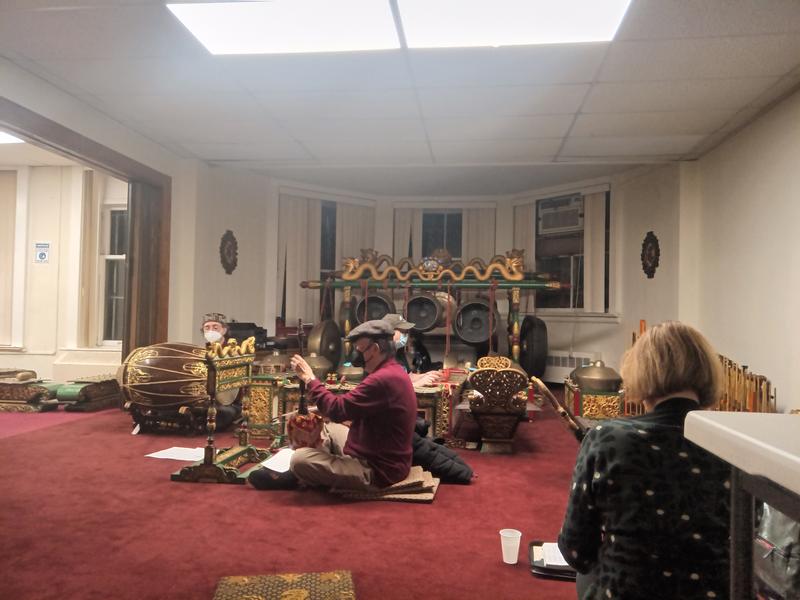
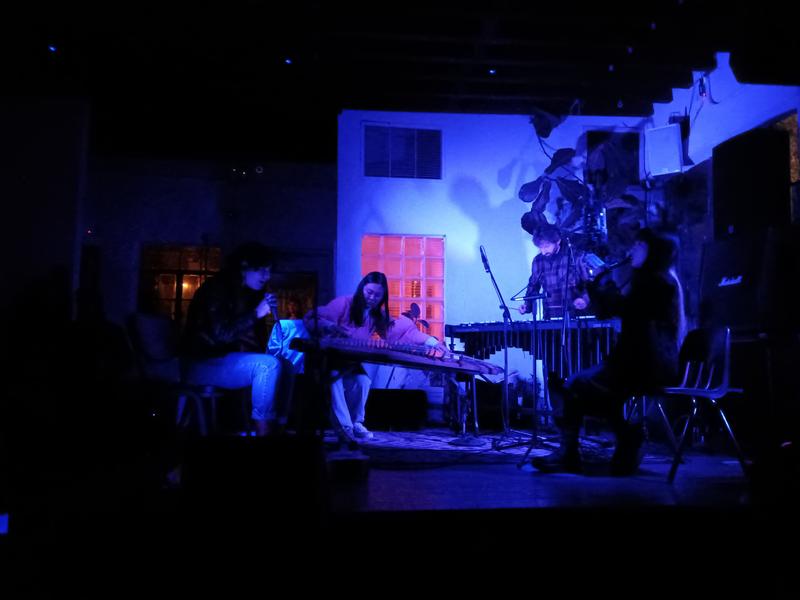
Image Descriptions: Gamelan Rehearsal with Pak Harjito, Anne Stabinger, Prof Marc Perlman and friends in Consulate General of Indonesian Republic
Trans Pecos, collaboration of Miriam Elhajli, Li-Chin Li, DoYeon Kim, Chris Dingman (photos by Gardika Gigih Pradipta)
ACC: Is there an experience of the past two months you consider to have been particularly impactful?
GGP: I went to a gamelan rehearsal at the Indonesian Consulate.* I must say that I think New York is really a combination of many people of many nations. I have already experienced many different forms of music in New York from Arabic to African, Brazilian, Latin, experimental, and orchestral music – this is the New York that I see, full of everything.
ACC: Which neighborhoods have you been discovering in New York City?
GGP: I often go to Harlem. You can listen to boombox hip hop music and people doing rap in the streets. I also usually go to Chinatown for food as well because the food is delicious and cheap! I think Brooklyn is full of arts – venues like Roulette, BAM, and Barbés have been great, and I think a lot of artists stay in Brooklyn. Queens, I feel like is more of an international community.
The city is really interesting because there are so many different atmospheres. I think because this is a harbor city, there are many immigrants that want to reach their dreams here and I think all of these communities shape New York.

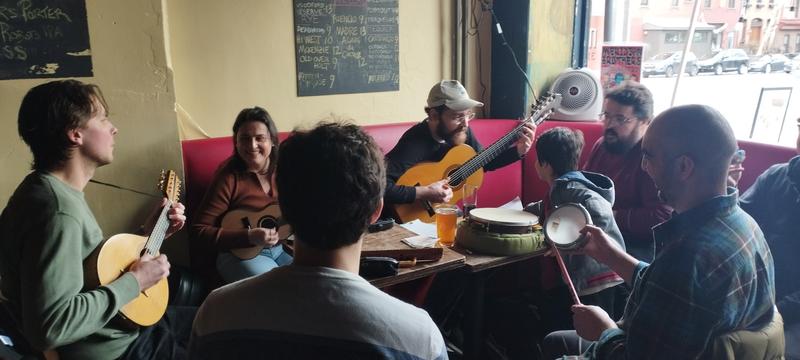
Image Descriptions: Mamady Kouyate's Mandingo Ambassador
Clube de Choro at Barbés Brooklyn (photos by Gardika Gigih Pradipta)
ACC: How would you compare the traditional aspects of Indonesian music identities with the musical identity you are discovering here in New York?
GGP: In Indonesia, we must realize there have been several steps of culture that brought us here. For example, there is first the influence of the Hindu Buddha from India, and then the Islamic influence when people from the Middle East and India came to trade in the maritime era where they spoke about religion and music of their own cultures…We also have many tribes with their own languages, but the lingua franca unites us [in Indonesia]. In terms of locality, we have so many cultures on every island where the food, music, and visual art is all very different. From this, I think there is a mirror of what I am experiencing when it comes to the diversity in New York and in Indonesia.** I want to respect and celebrate the cultures that brought me here.
ACC: How have you been able to share the cultural experiences and knowledge from your home in Indonesia with folks here in New York and the US?
GGP: Now, in New York, I think it is more about learning, experiencing, and sharing inspiration through meeting people, musicians, and composers. I have seen and met artists and researchers like Douglas Ewart, Rhiannon Giddens and professor I. Harjito. I have experienced performances of Irish and Chinese music ensembles. I have also had the opportunity to learn about ethnomusicology programs at schools like UCLA and Wesleyan with diverse cultural atmospheres. To see these works, talk with these people and learn about these new things, it is really amazing. I also had a recording session in Brooklyn with my friend, amazing musician, composer, instrument maker, and philosopher, Douglas Ewart. From these experiences I think about universalism and particularism – it is like a never-ending dialogue. It is in the ACC mission that I can build a connection between East and West in terms of culture. This is dialogue and mutual respect. I found the spirit in these amazing musicians.
My reason for doing this research is about diversity, a dialogue of respect, empathy, and mutual understanding, because differences are often a reason for conflict, war, and negative sentiments. In the future, as a composer and musician, I want to create more music works based on multicultural collaborative ideas – music as a language for friendship and dialogue.
,%20performed%20by%20Juilliard%20Student.jpg)
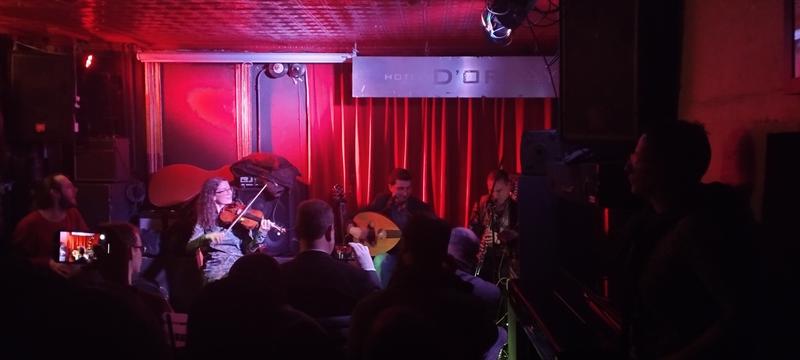
Image Descriptions: Rhiannon Giddens – Composition Selection from Omar (Opera), performed by Juilliard Student
Maendros play Greek, Turkish and Middle East Music at Barbes (photos by Gardika Gigih Pradipta)
*To read more about Pradipta’s unique experience and perspective from this rehearsal, please visit his blog post HERE
**After ACC’s conversation with Pradipta, he shared some context about Indonesia in reference to his statement regarding Indonesian culture being a mirror of New York multiculturalism:
GGP: In the book “Nusa Jawa Silang Budaya”, Denys Lombard writes: "Indonesia, and the Island of Java in particular, throughout its 2000-year history has become a crossroads of cultures: the most important civilizations in the world – India, Islam, China and Europe – meet there, are accepted, processed, developed and renewed. For a historian, the island of Java is an outstanding example for studying the concepts of tradition, cultural influence, ethnicity and acculturation."
Find some of Pradipta’s work highlighting multiculturalism, and channels in which to follow him below:
- "Mantra" - ft Liz Tara - A collaboration between Pradipta and Liz Tara from Flores, East Nusa Tenggara, Indonesia. Tara is a chef based on local materials, an activist and educator. In this work she reads a Mantra from Sikka about relationship between human and earth.
- "Tenggelam" - ft. Leilani Hermiasih and Puput Pramuditya - A soundtrack for "Rumah", a film by Yosep Anggi Noen for Okinawa Prefecture Japan (2014). This music is inspired by Keroncong tradition, a hybrid folk music of Portuguese and Javanese influence.
- "Mimpi Owa" - A collaboration with Javanese Gibbons in Petungkriyono forest, Central Java during a residency in Tanijiwo. Pradipta made music with the sound of Javanese Gibbons, Kecapi Sunda (Sundanese Zhiter), and basingpacing (a reed instrument from Sulawesi) as a reflection of the global climate crisis. Video made by Musik Sekitar.
Pradipta on social media: Spotify | SoundCloud | Facebook | Instagram
 ACC New York
ACC New York